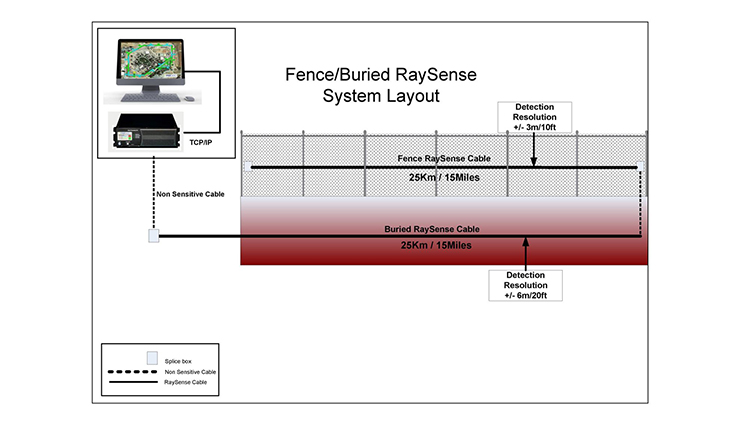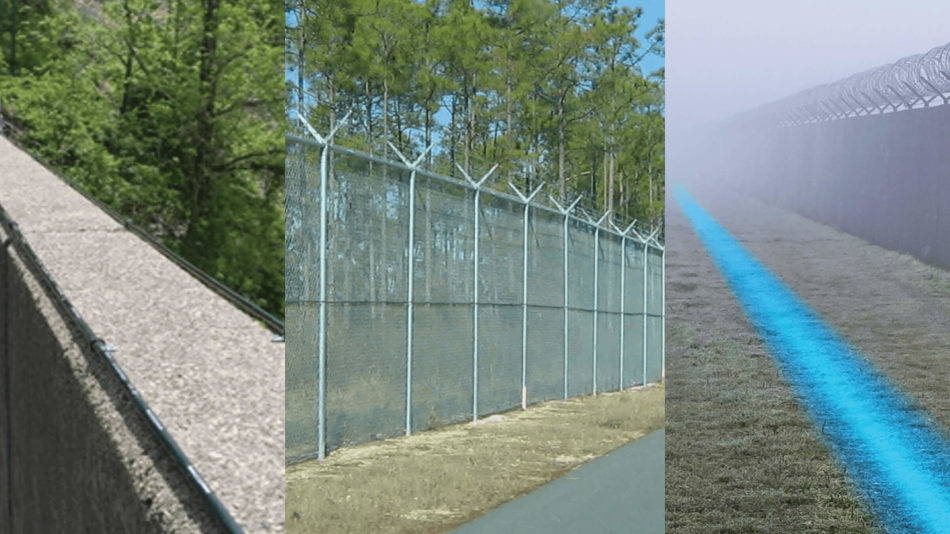The Importance of a Fiber Optic Security System in Protecting Sensitive Data and Facilities
The Importance of a Fiber Optic Security System in Protecting Sensitive Data and Facilities
Blog Article
Why Fiber Optic Safety And Security Systems Are the Future of Protection
The shift to fiber optic security systems marks a considerable innovation in the realm of protection, driven by their outstanding information transmission capacities and resilience to exterior disturbances. As the landscape of protection progresses together with arising innovations such as AI and IoT, the capacity for fiber optics to improve and redefine safety infrastructures becomes increasingly obvious.
Benefits of Fiber Optic Solutions
One of the main advantages of fiber optic systems is their exceptional data transfer capability, which helps with the transmission of large quantities of information over cross countries without significant loss. This particular is especially valuable for safety and security applications that require the continuous surveillance and transfer of high-definition video clip feeds, sensing unit data, and other critical info. Optical fiber can fit the growing needs of modern-day safety systems, ensuring that data remains undamaged and reputable.
In addition, fiber optic cable televisions are less susceptible to electromagnetic disturbance, which can be a significant concern in atmospheres with numerous electronic gadgets. This resistance enhances the stability of the information being transferred, thereby minimizing the danger of information breaches or system failings. Fiber optic systems are naturally more safe than traditional copper cords, as touching right into a fiber optic line without discovery is exceedingly tough.
The longevity of fiber optic wires additionally adds to their appeal. They are resistant to environmental elements such as wetness and temperature level variations, lowering maintenance prices and raising system durability. Generally, these benefits position fiber optic systems as a durable and efficient option for modern-day safety infrastructures, making sure trustworthy and safe information transmission.
Boosted Data Transmission Rate

The ability to transfer huge quantities of data swiftly promotes the smooth combination of high-def video clip feeds and progressed analytics. Safety and security systems can currently process and evaluate details in real-time, improving action times and situational recognition. Additionally, fiber optic connections support longer transmission distances without deterioration of signal quality, making them perfect for large safety and security networks.
The enhanced rate of fiber optic systems not just boosts the effectiveness of protection operations but likewise reduces latency. This is particularly crucial in important circumstances where prompt decision-making can prevent safety breaches or mitigate potential risks. As companies remain to focus on security and effectiveness, the demand for rapid and dependable information transmission will undoubtedly strengthen fiber optic systems as a cornerstone of modern-day protection facilities.
Resistance to Disturbance
Fiber optic safety systems regularly show exceptional resistance to electro-magnetic interference, a vital benefit in atmospheres prone to digital sound. Unlike traditional copper wires, which can be negatively influenced by magnetic fields, radio regularity interference, and various other forms of electrical disruption, fiber optic wires make use of light to transmit information. This intrinsic residential property makes certain that the signals remain clear and unchanged, despite bordering digital task.
Making use of glass or plastic fibers in fiber optic modern technology creates a barrier versus disturbance, permitting for dependable information transmission even in challenging situations such as commercial facilities, urban locations with high electronic website traffic, or locations near radio towers. This characteristic significantly decreases the chance of signal degradation or loss, making fiber optic systems especially ideal for protection applications where honesty and precision of information are critical.
Furthermore, this resistance to interference enhances the overall performance and integrity of protection systems, making certain that monitoring and sharp systems operate flawlessly. In a globe where safety is significantly endangered by sophisticated technologies, the strength of fiber optic systems attracts attention as an essential function, strengthening their standing as an essential component of contemporary safety and security framework.
Cost-Effectiveness Gradually
Significant cost my site savings can be achieved over time with the execution of fiber optic protection systems. While the initial investment might appear higher compared to typical copper-based systems, the long-term financial advantages emerge through lowered functional and maintenance prices (fiber security). Fiber optic cables are naturally a lot more sturdy and less prone to ecological aspects, which translates to reduce replacement and repair service expenditures over their life-span
Additionally, fiber optic systems need less power to operate, which even more lowers energy expenses. Enhanced data transmission capacities enable for fewer repeaters and amplifiers, minimizing tools investment and streamlining installment procedures. The scalability of these systems additionally contributes to cost-effectiveness, as organizations can increase their protection infrastructure without sustaining significant extra costs.
An additional factor to consider is the enhanced effectiveness in monitoring and feedback capacities that optical fiber offer. Boosted real-time data transmission can result in quicker occurrence action times, potentially mitigating losses and obligations related to safety violations. Altogether, the long-lasting benefits of fiber optic security systems not only justify the initial expense however additionally place them as a financially prudent selection for companies looking for durable defense remedies.

Future Technologies in Safety
Progressing innovations are set to revolutionize protection systems, incorporating man-made intelligence (AI) and artificial intelligence to enhance hazard detection and response capacities. These advancements will allow security systems to examine huge quantities of information in real-time, determining patterns and anomalies that suggest potential hazards. This positive technique will certainly allow much faster decision-making and much more reliable case actions.
Additionally, the incorporation of the Internet of Things (IoT) is leading the way for interconnected safety tools, offering extensive surveillance and tracking. Smart sensing units can relay information regarding ecological adjustments, while automated signals can notify safety and security workers immediately of questionable activities.
Furthermore, the advancement of biometric innovations will better reinforce security systems. Facial recognition, fingerprint scanning, and retina identification are coming to be a redirected here lot more innovative, providing layers official website of authentication that are tough to bypass.
Conclusion
Finally, fiber optic protection systems stand for a substantial development in security modern technology, supplying exceptional information transmission rate, resistance to electromagnetic disturbance, and lasting cost-effectiveness. As the demand for advanced protection remedies proceeds to grow, the combination of fiber optics with emerging modern technologies such as AI, IoT, and biometrics will even more improve protection facilities (fiber security). The mix of these technologies will ensure a more secure and receptive environment, strengthening optical fiber as a foundation of future security systems
Report this page